an Ancient African Civilisation Tyla Kaitlynn Kensley
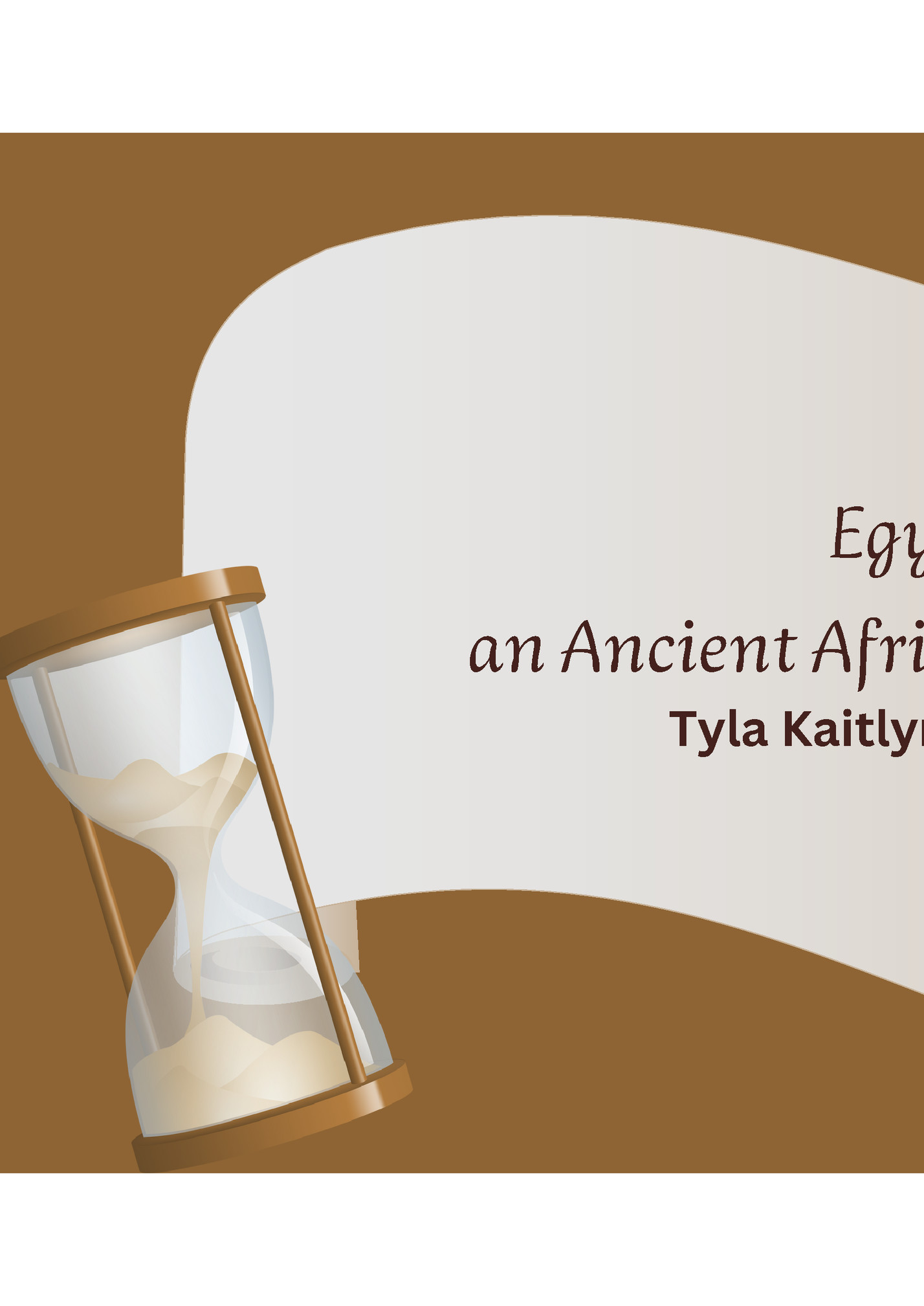
The Nile River Page 3 - 8 Tutankhamun Page 8 - 9 The valley of kings Page 10- 14
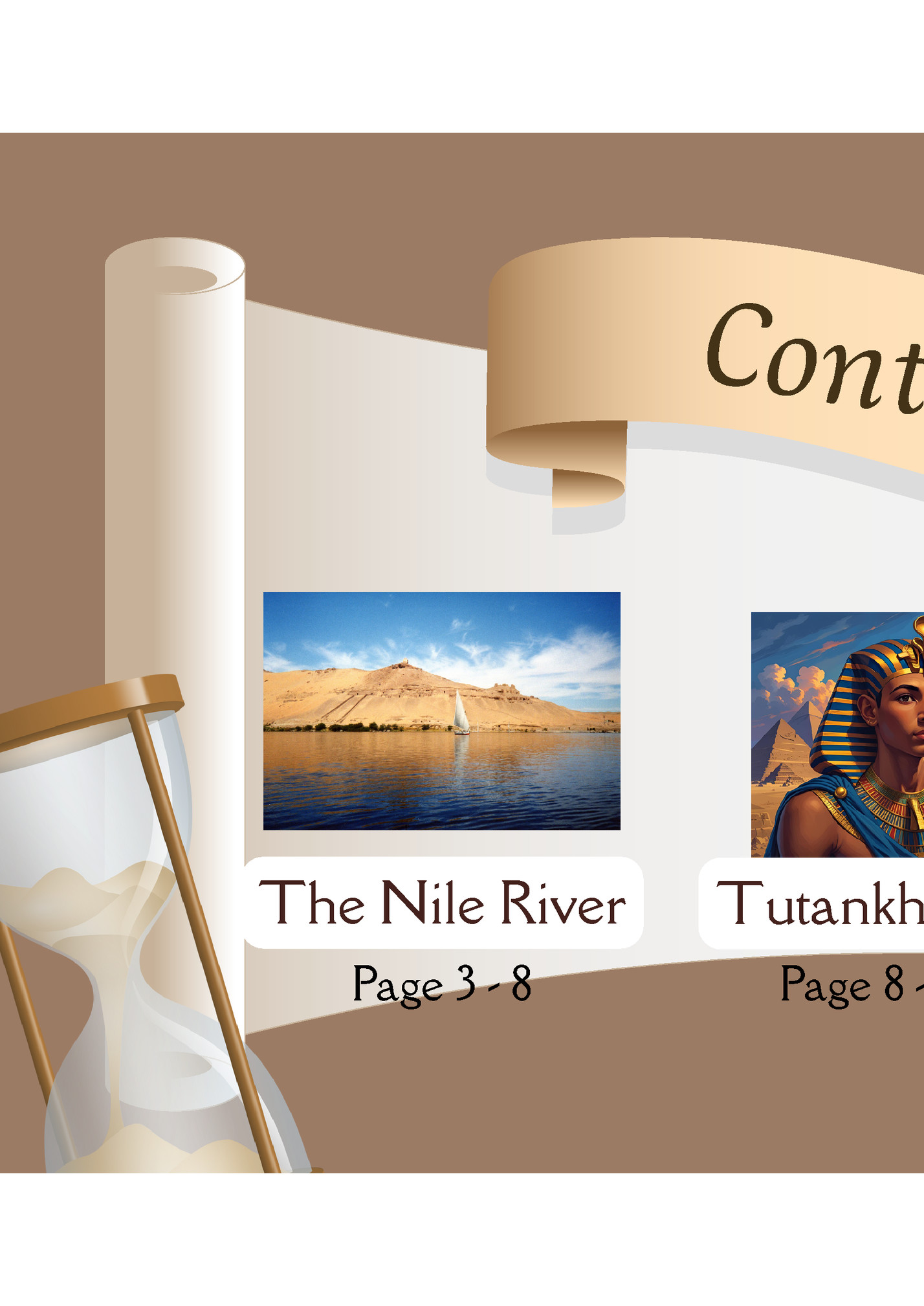
ile R i v e r One of the longest and biggest rivers of our time, the famous Nile River is 6800 km long, has existed for 30 million years, and empties into the Mediterranean Sea close off the coast of Egypt (El-Behaedi, 2025). The White Nile, which originates in the mountains of Rwanda and Burundi, and the Blue Nile, which originates in Ethiopia's highlands, are the two tributaries that make up this river (Encyclopaedia Britannica, 2025). This distinctive physical feature has influenced Egypt's history, culture, and agriculture over the years. It is regarded as one of the primary factors that has allowed civilisation to thrive in an area like Egypt that is notoriously arid and desolate (Kiger, 2025).
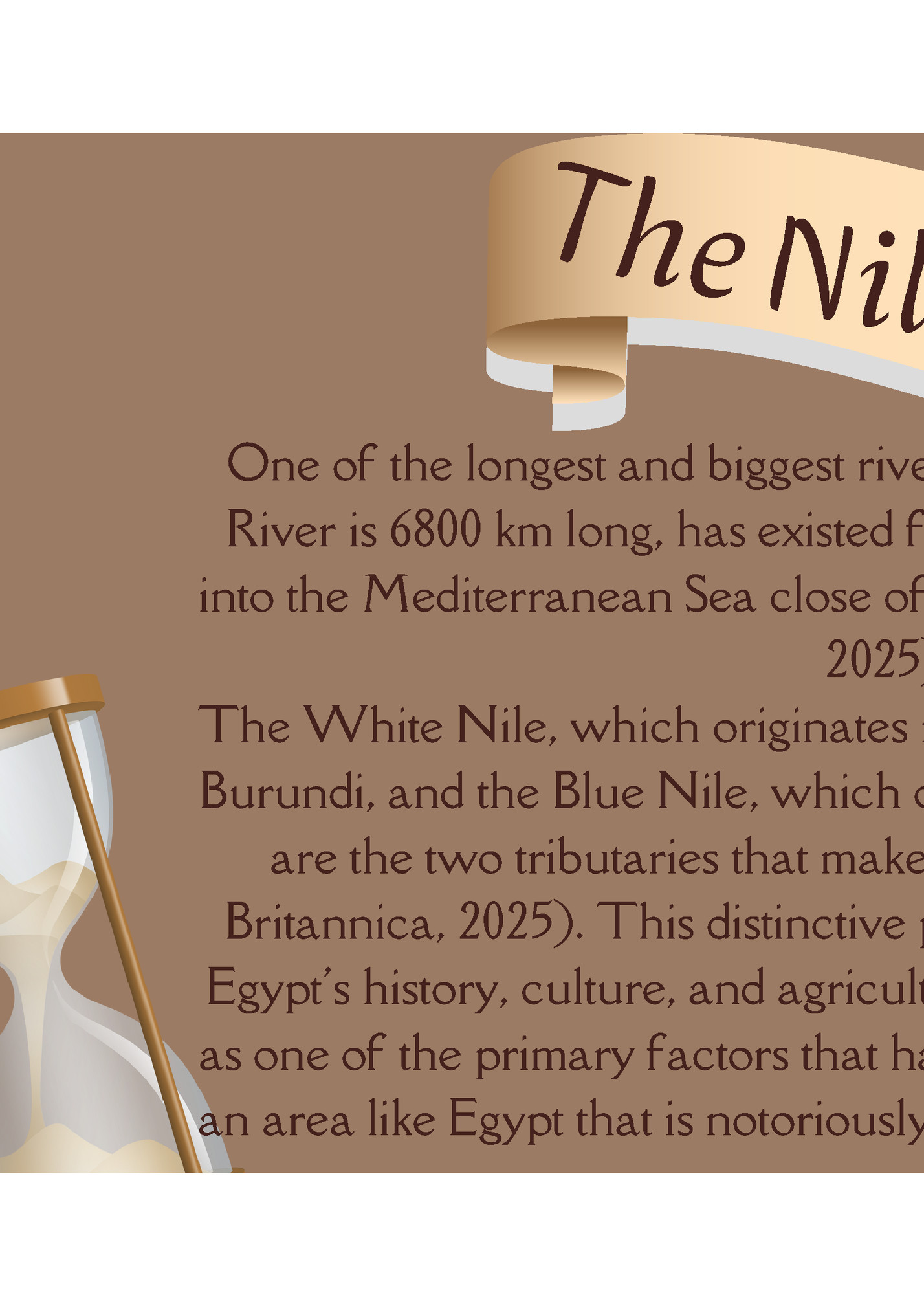
anticipated floods of the Nile that occurred throughout Egypt's summer months, which lasted from May to September. The ancient Egyptians used this flooding event, also called the "Inundation" or "Akhet," to deliver life-giving water to Egypt for drinking and bathing. More importantly, though, was that the water would deposit a new layer of nutrient-rich black silt on the floodplains. As the floodwaters subsided, the rich silt from the volcanic uplands would be carried by the river and settle on Egyptian fields. The silt regenerated the soil, yielding crops that were very productive. Because of the dark brown, black-looking silt, the ancient Egyptians even called their nation "Kemet," which translates to "black land."(Smithsonian Environmental Research Center, 2025).
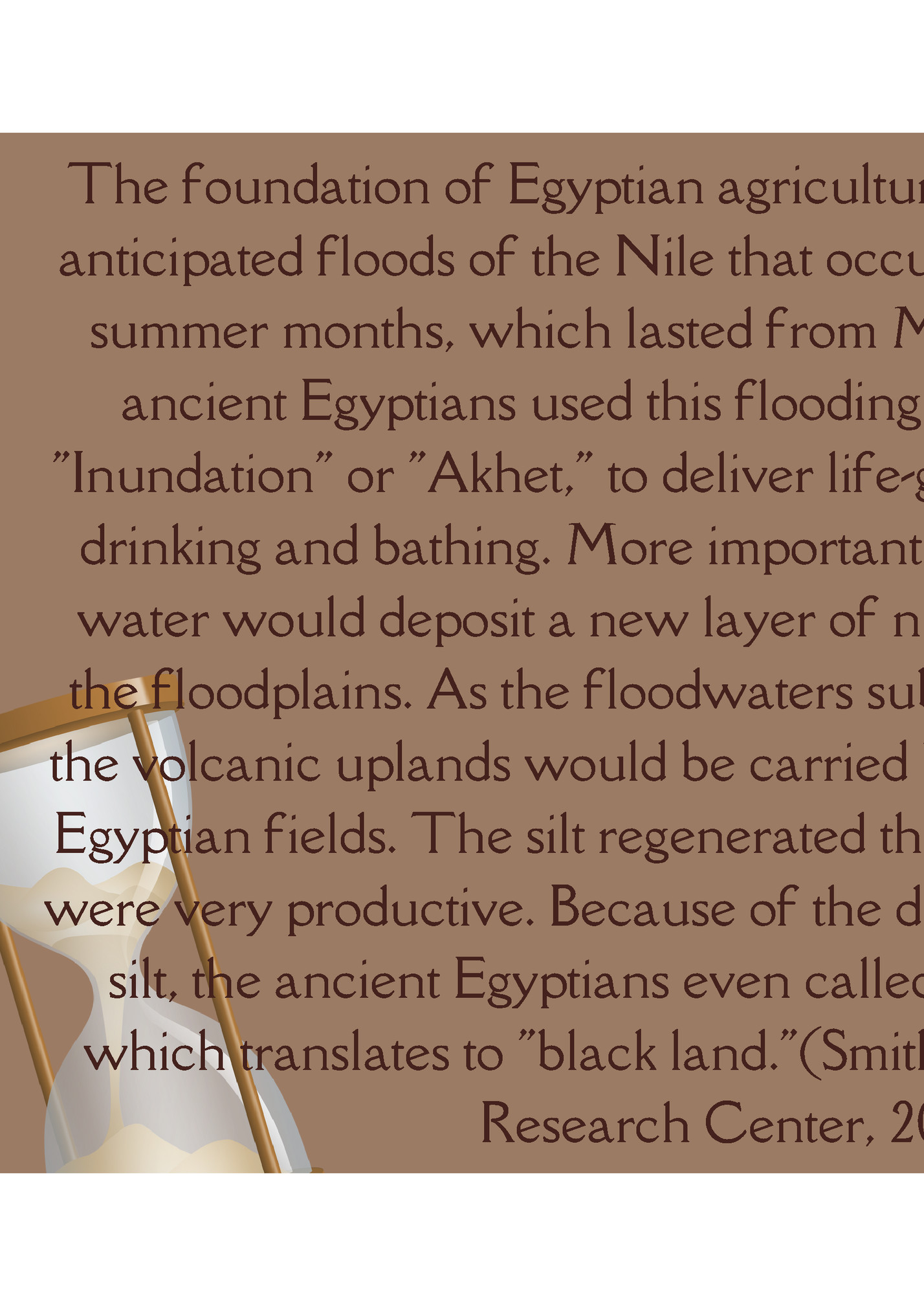
rhythm of this annual flood cycle. The ancient Egyptians divided their years into three halves based on how the Nile behaved. Each component—Akhet, which means flooding; Peret, which means growth; and Shemu, which means harvest —relates to a distinct action required to enable their land to flourish. Together, these components are now referred to as the Egyptian calendar (Gertz and Gilan, 2023). One of the most well-known irrigation techniques developed by Egyptian farmers to use the water from the floods was bassin irrigation, which involved creating canals and banks on their soil to create basins that could absorb floodwaters and saturate the land. After the water had sunk into the ground, usually a month later, the soil was ready for planting (Encyclopaedia Britannica, 2025).
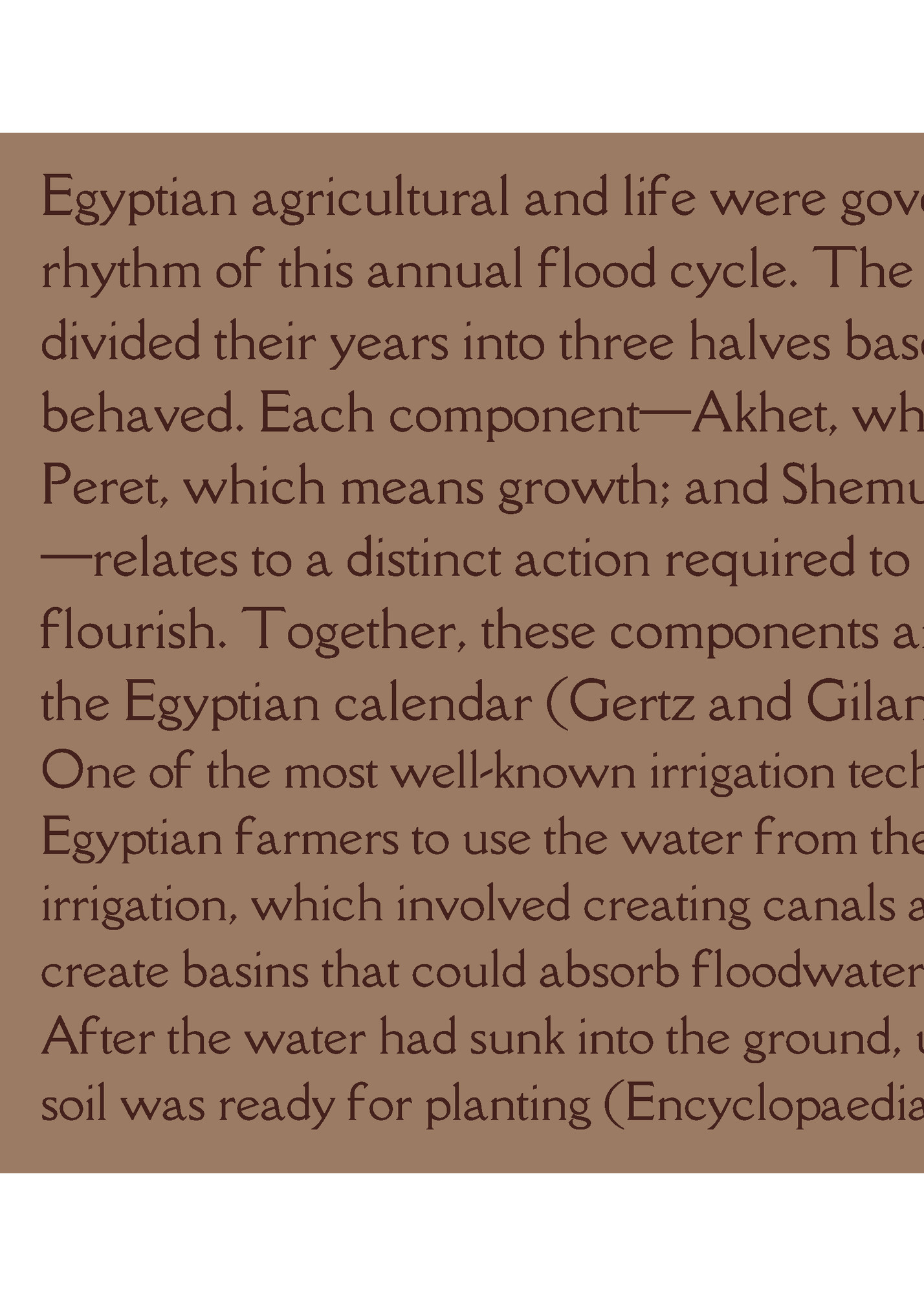
diverse foods that were farmed along the Nile. The flour for bread and the ingredients for beer came from these varied crops; daily existence depended on staples like wheat and barley (Kleeman, 2020). The ancient Egyptians raised flax extensively for its fibres in addition to its grains, which they used to manufacture linen for garments and other textiles such as mummy dressings and strips for members of the upper classes (SOLEIL Synchrotron, 2016). Onions, leeks, lettuce, beans, lentils, and other vegetables were common, as were fruits including grapes, figs, pomegranates, and melons. Even while papyrus reeds weren't a food crop, they were crucial for making ropes, boats, paper, and mats, illustrating the river's many uses (Encyclopaedia Britannica, 2025).
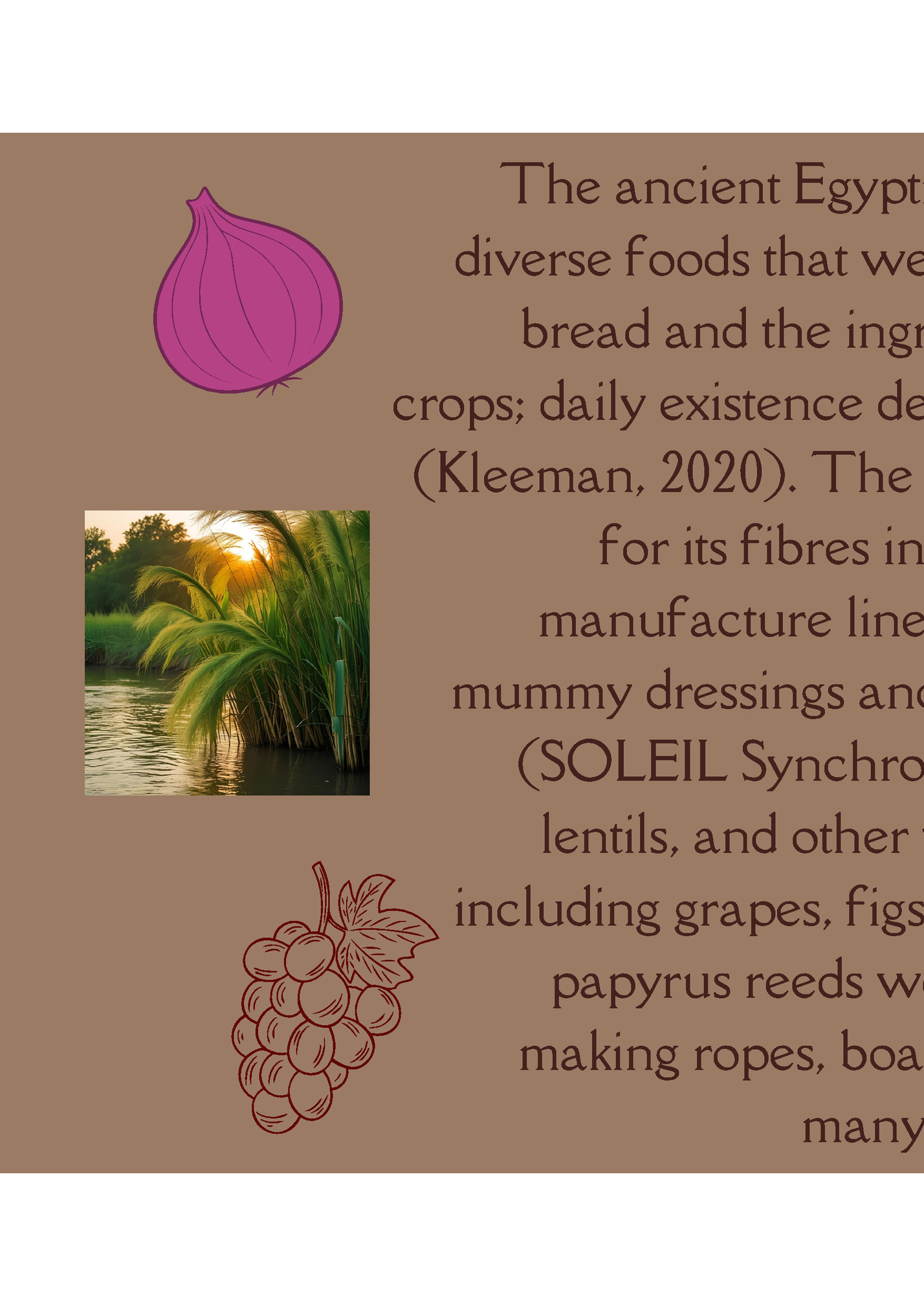
the flow of agricultural products from fields to marketplaces and urban areas. Because of the effective distribution and exchange of goods made possible by this interconnection, agricultural prosperity was further cemented. An uncommon achievement in the ancient world, agricultural surpluses were made possible by the Nile's dependability and generosity. The growth of specialist labour, intricate social institutions, and magnificent architecture were made possible by the huge, concentrated population that was sustained by this surplus food supply. It would have been difficult to feed the labour force needed to build the pyramids, temples, and other amazing engineering achievements that characterise ancient Egyptian civilisation if the Nile hadn't continuously replenished the land and water.

Known by his popular nickname, King Tut, King Tutankhamun was a significant Egyptian pharaoh who ruled during the 18th dynasty of the New Kingdom of Egypt from roughly 1323 to 1332 BCE (PBS, 2025). He assumed the throne as a young lad, about 8 or 9 years old, and was guided by his counsellors (PBS, 2025). When Tutankhamun took control of Egypt, he quickly overturned his father's religious policies and restored traditional polytheistic religion so that they could worship the god Amun-Ra. He also moved the capital to Thebes, which earned him the nickname Tutankhamun. His religious father had originally given him the name Tutankhaten, because he worshipped the sun disc above all other gods (PBS, 2025).
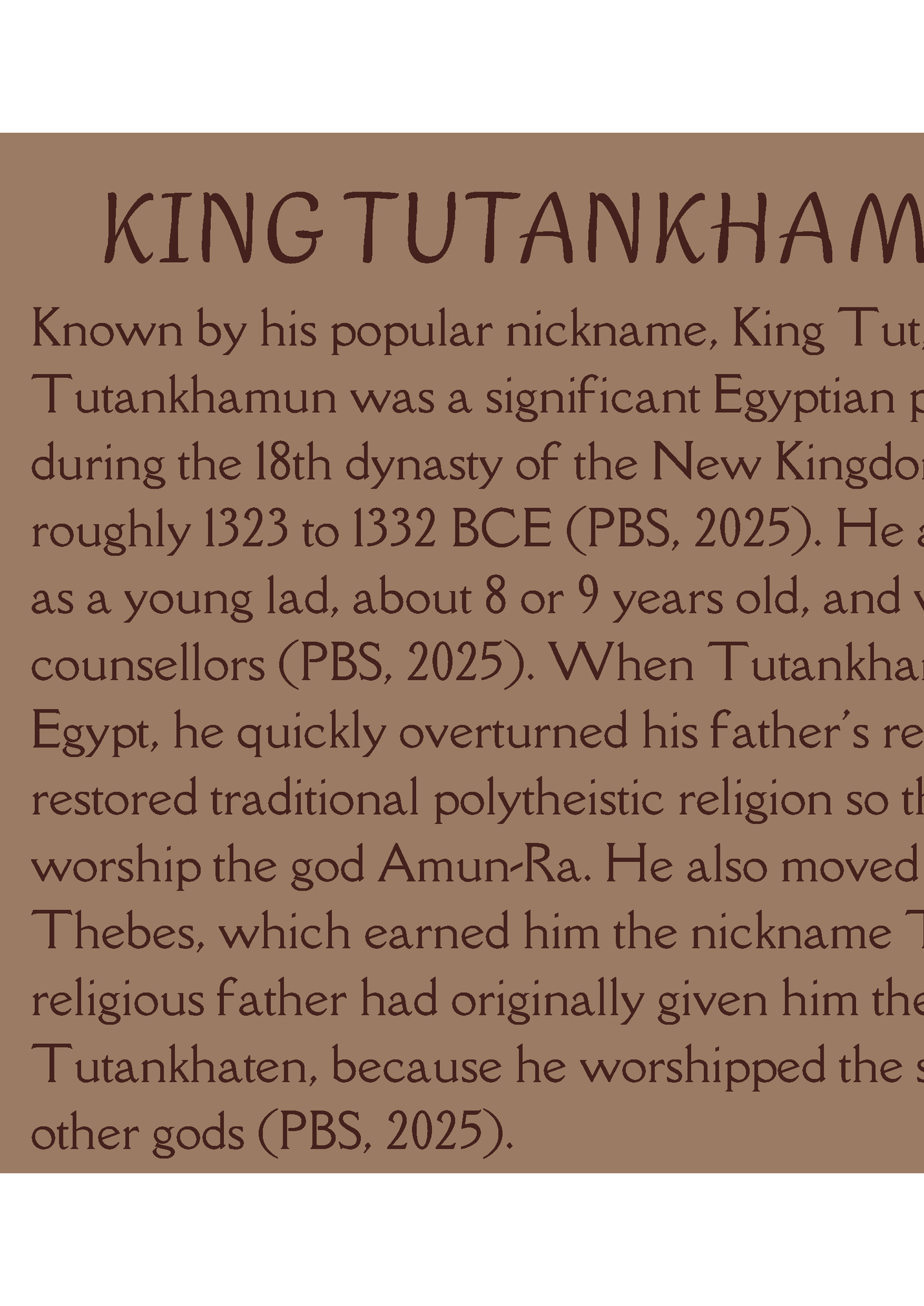
not particularly noteworthy, despite his current notoriety. At the age of 18 or 19, he died too soon, leaving no surviving immediate descendants (PBS, 2025). The British archaeologist Howard Carter's astounding discovery of his nearly untouched tomb in the Valley of the Kings in November 1922 is largely responsible for his current prominence (Allen, 2006). As was the case with King Tutankhamun after his death, it was customary in Egyptian culture at the time for members of high society to be wrapped in various types of cloth, have their bodies soaked in oils, and be buried in a tomb full of their personal belongings and treasures. After millennia, the aforementioned archaeologist Howard Carter discovered his tomb in 1922. It provided a window into the wealth, artistic talent, and burial customs of ancient Egypt, enabling researchers to learn more about the ancient Egyptians' ways of life that had eluded them for years (Dean, 2023).
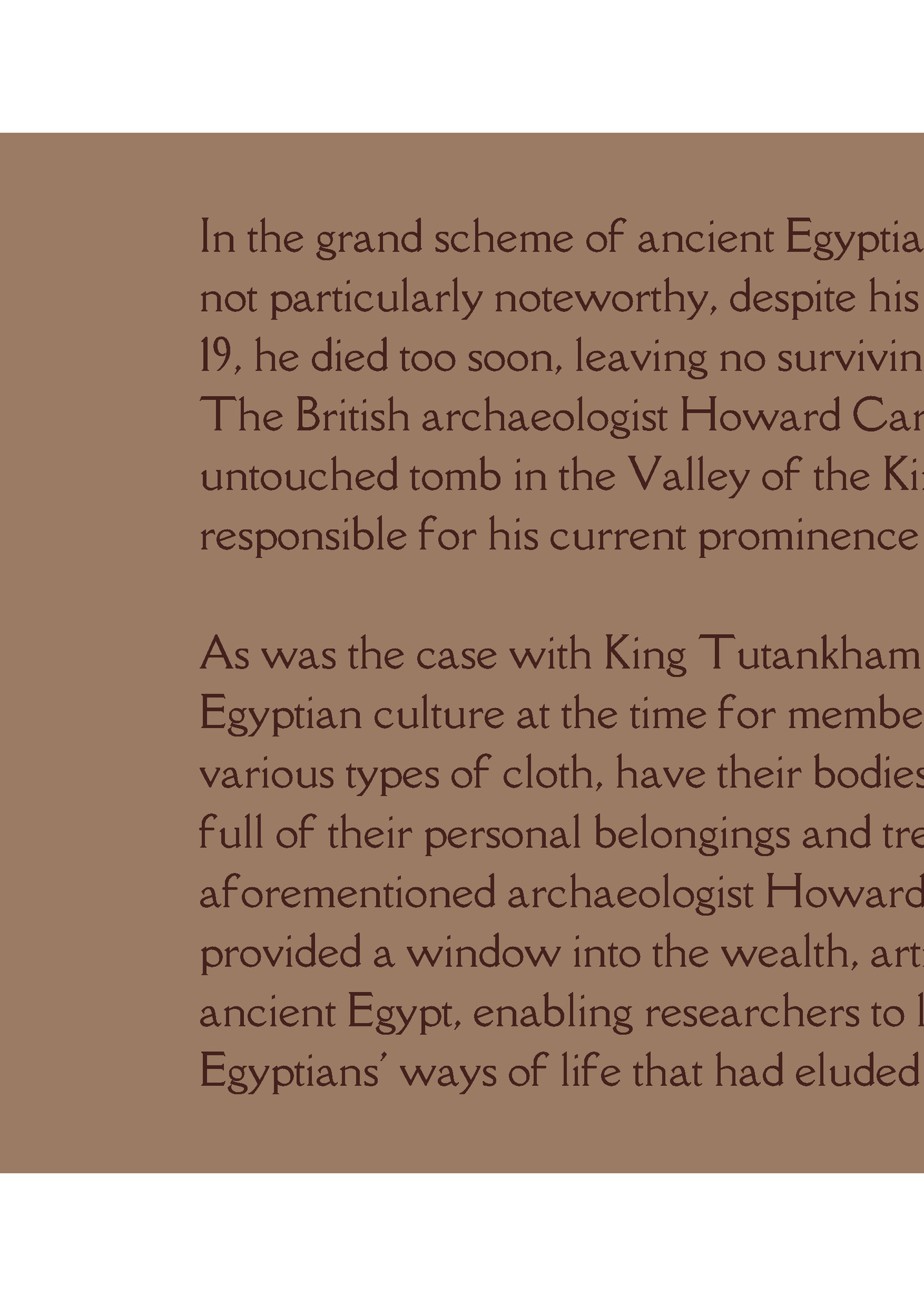
Fleepit Digital © 2021